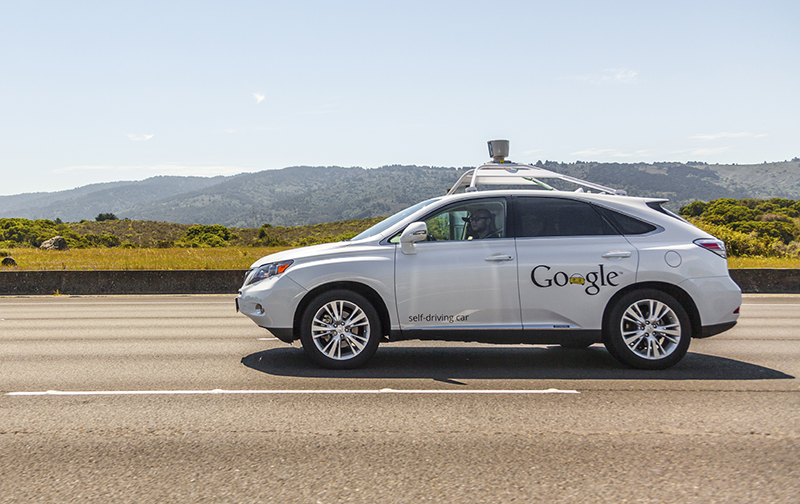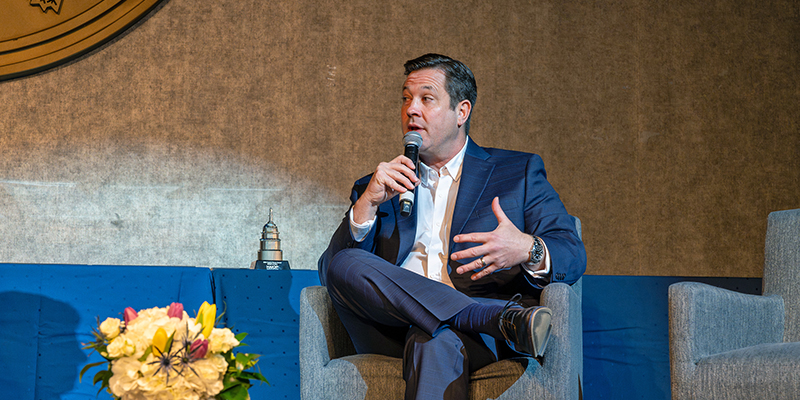How will the autonomous and driverless cars of tomorrow impact commercial real estate? NAIOP Distinguished Fellow David Dale-Johnson, Ph.D., addressed that question in the fall 2016 issue of Development magazine. But the tomorrow he envisions — one in which unneeded parking structures and parking lots could be redeveloped as new residential, office, self-storage or retail space — may be coming sooner than we think.
In September, the first self-driving Uber cars hit the road in Pittsburgh, each with a “safety driver” in the front seat in case human intervention is needed. According to a recent Wired article, the cars are Ford Fusions outfitted with a spinning LIDAR system on the roof and a touchscreen tablet that welcomes riders and provides information about the vehicle — including when it’s driving itself and what it “sees” — and the trip. The cars operate within a 12-square-mile section of downtown Pittsburgh.
A few days before Uber began its Pittsburgh pilot program, GrabTaxi Holdings Pte. Ltd. began a similar program in Singapore, in conjunction with self-driving car company nuTonomy. According to a Wall Street Journal article, Grab’s program offers free rides within a single business district and adjacent neighborhoods. The goal of the one-year partnership between the two companies is to allow them “to better study their customers’ experience with on-demand self-driving cars,” as well as “to provide new ways to improve Grab’s routing technology and mapping services, an area where it is trying to distinguish itself from Uber.”
If you’d like to own your own self-driving car, there’s no need to wait; just purchase a new Tesla. On October 19, the company announced that every new Tesla will be fully capable of driving itself. According to CEO Elon Musk, Tesla’s new hardware and software system “will reach level 3 autonomy in the coming months and level 4 and 5 should follow for complete autonomy by 2018” — in vehicles already being produced today. (SAE International’s standard defines a level 3 car as one that provides “conditional automation;” level 4 provides “high automation;” level 5 “full automation,” with no human driver required.)
According to another Wired article, “Tesla’s Self-driving Car Plan Seems Insane, but It Just Might Work,” Musk is also “pledging that by the end of 2017, he’ll produce a Tesla that can drive itself from Los Angeles to New York City, no human needed.” The article points out that “this timeline puts him years ahead of every other big player working on fully autonomous cars.”
What do cities need to do to prepare for these vehicles and the changes they will bring? Former New York Mayor Michael Bloomberg “wants to develop a set of policy recommendations for cities that are just waking up to the driverless revolution,” according to a Washington Post article. “Five cities will serve as testing grounds and early participants in the conversation: Austin, Los Angeles and Nashville … as well as Buenos Aires and Paris. Five additional cities will be named by year’s end.” The article adds that Bloomberg Philanthropies “and the Aspen Institute want to start by getting mayor, academics and other experts talking and planning for the future.”
Robin Chase, co-founder and former CEO of Zipcar, argues in a Backchannel article that “cities and countries must actively shape the introduction of AVs [autonomous vehicles]. We are getting access to this technical marvel at the precise moment when cities are full and bursting from the urbanizing of our planet, when we absolutely need to transition rapidly from fossil fuels, and when it is imperative to improve people’s access to opportunity: jobs, education, health services. We have the ability to eliminate congestion, transform the livability of cities, make it possible to travel quickly and safely from A to B for the price of a bus ticket, improve the quality of our air, and make a significant dent in reducing CO2 emissions.” The very landscape of cities will change, he insists: “On-street and almost all off-street parking, including parking garages, will be unnecessary and we’ll get rid of them. Communities and local governments can come up with criteria and priorities for how to repurpose that newly available public space: wider sidewalks, more street trees and plantings, bike lanes, street furniture. Progressive cities will make use of old parking lots, garages, and gas stations to fix what was lacking: affordable housing, green space, grocery stores, schools. Proactive cities will know their priorities neighborhood by neighborhood, as well as their criteria for action, before the transition begins.”
For more perspectives on how self-driving cars will transform cities and the buildings within them, see a third Wired article, which presents the visions of eight urban planners and futurists, who echo many of Dale-Johnson’s forecasts. Kinder Baumgardner, managing principle, SWA Group, agrees that parking lots, parking spaces and garages will be converted to other uses, and notes that some garage operators are already strategizing how to reposition or sell their properties, which could then be transformed into retail outlets, public spaces or even housing. Lisa Futing, project manager for the Audi Urban Futures Initiative, adds that the “’biggest change to the urban fabric will be to parking infrastructure’” and notes that tomorrow’s parking facilities “’will be able to accommodate 60 percent more cars thanks to smaller driving lanes, greater maneuverability, and a lack of need for stairs and elevators.”
Finally, self-driving trucks have also been in the news lately, and will clearly have an impact on industrial real estate in the near future. The first revenue-generating load was transported by an autonomous truck on October 20 by Otto, Uber’s self-driving truck subsidiary. “In the first real-world commercial use of autonomous trucking, some 45,000 cans of Budweiser beer arrived … at a warehouse after traveling over 120 highway miles in a self-driving truck with no driver at the wheel,” a recent Reuters article reports. A driver monitored the trip from Fort Collins, Colorado, to Colorado Springs from the truck’s sleeper berth, taking the wheel only to drive onto and off highway ramps.
What impacts do you think self-driving cars and trucks will have on commercial real estate? Let us know by posting a message in the comment box below.














